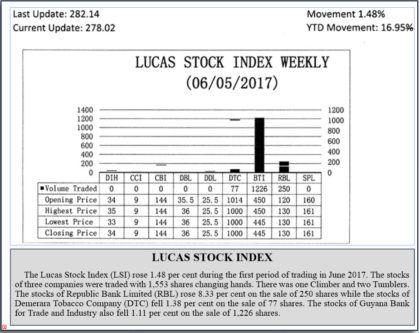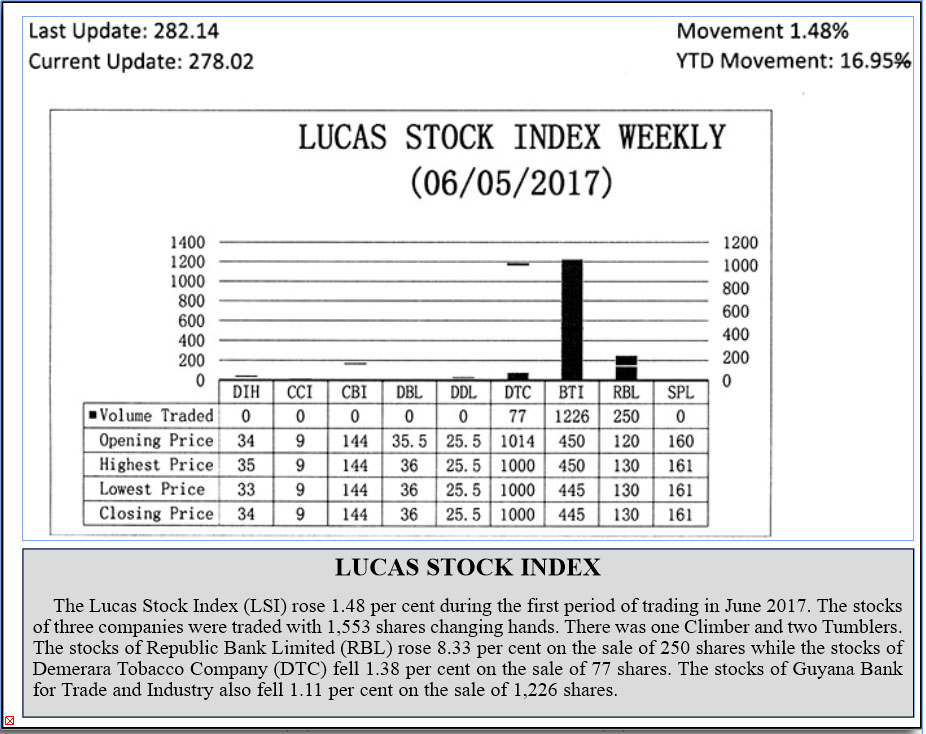Rule out
Perhaps among the main reasons for agriculture remaining a priority is the contribution that it makes to the economy beyond making food available for consumption. Important measures are the contribution that the sector makes to GDP, the contribution that it makes to employment, the contribution that it makes to government revenues and the number of persons who are dependent on the sector for their livelihood. It is something one might question in looking at some of the numbers. One could almost rule out the importance of the contribution of agriculture to government revenues. Based on available data, agriculture contributes less than three per cent to government revenues. It is an interesting outcome given the amount of help that agriculture is supposed to be receiving from government. The focus therefore would more be on its contribution to GDP and employment.
Significant not dominant
Starting with its contribution to GDP, agriculture is significant but not dominant. In the period 1992 to 1996, agriculture contributed 37.4 per cent of the GDP. A look at the period 2011 to 2015 reveals that the average contribution of agriculture fell to 16 per cent. In other words, agriculture’s share of GDP declined by 58 per cent. This substantial change in size however is not all attributed to a weakening in the performance of the sector. It could worsen with the inclusion of oil and gas into the production structure.
It should be recalled that the Guyana economy was rebased in 2006 at which time more items were added to the measurement of GDP. These additions included tourism and information and communication technology (ICT) whose inclusion would have led to an increase in the GDP used to calculate the share of each sector and industry. The enlarged denominator, in turn, would have led to a shrinkage in the share of all the previously counted items if their output did not match the size of change of GDP. Consequently, a comparison was also made with the performance of agriculture between the period 2006 to 2010 to see how the sector progressed in the newly defined production structure of the country. In the period 2006 to 2010, agriculture contributed an average of 18 per cent to GDP. Therefore, at 16 per cent, the contribution of agriculture declined two percentage points during the latter period of 2011 to 2015. The reference to the 1992 to 1996 period puts into sharp focus the illusions of agriculture as an overarching sector of the economy. The way the agricultural sector behaved in the more comparative periods would lead anyone to question its significance to the economy and to make one wonder how sincere were efforts at boosting its contribution. It must be noted too that the period 2011 to 2015 was one that was characterized by relatively buoyant gold prices and the collapse of the commodity super cycle.
Perspectives
A peek into the composition of the sector offers some very interesting perspectives on its condition as well. Sugar, which was by far the most dominant industry in agriculture, recorded the biggest losses in value to the economy. Sugar’s contribution to the economy was 22 per cent and its share of the agricultural sector was about 60 per cent in the 1992 to 1996 period. Within the period 2006 to 2010, sugar’s contribution to GDP was recorded at five per cent and its share of the agricultural sector was down to 29 per cent. Within the period 2011 to 2015, sugar’s contribution to the economy fell further and bottomed out at 3.8 per cent while its share of the agricultural sector had fallen to 25 per cent. By that time, sugar had been overtaken by rice and was doing its best to stave off challenges from ‘other crops’ and livestock in its contribution to GDP.
With relatively better terms of trade in the period 2011 to 2016, the marginal value-added of sugar was higher than in the period 2006 to 2010. Notwithstanding the better terms of trade, sugar output declined 10 per cent between the two periods, heightening the belief that the sugar industry had gone beyond the point of maturity. It was an industry in decline.
Rice
Despite the periodic setbacks in price and markets, rice has grown in importance to the economy and in stature within the agricultural sector. For the period 1992 to 1996, the contribution of rice to the GDP was 9 per cent. By 2006 to 2010, its share of GDP was recorded as 6 per cent and its contribution to the agricultural sector had risen to 31 per cent. When compared to the period 2006 to 2010, rice’s contribution to GDP in the period 2011 to 2015 appeared to be marginally better at 6.3 per cent while its share of the sector had risen to 41 per cent. With output expanding 62 per cent and the marginal value-added of rice continuing to grow with output, reaching $3 over the last five years, it appears that the impact of rice on GDP might be limited by the change in the contribution from other sectors. Consequently, it is reasonable to conclude that, unlike sugar, rice has not reached its zenith as an agricultural crop in Guyana.
The same could be said for ‘other crops’ and livestock. They have not reached their full potential as well. ‘Other crops’ consists of a range of vegetables, fruits, legumes, seasoning, peppers and ground provisions. They are an important mix of products with short-term and long-term gestation periods. However, their performance is being assessed collectively. For the period, 1992 to 1996, ‘other crops’ and livestock contributed a combined 6.3 per cent to GDP. In the period 2006 to 2010, they contributed seven per cent and in the period 2011 to 2015, they contributed six per cent. Instead of moving forward, the contribution of the combined industries has fallen. The decline might be minuscule, but it essentially suggests that emphasis was being placed in other parts of the economy.
Breakout
A breakout of the two products offers a more glaring perspective of their performance. While livestock increased its contribution to the agricultural sector by four percentage points, the contribution of ‘other crops’ declined by eight percentage points. Something is clearly wrong in the area of ‘other crops’ production. From the history of agriculture in Guyana, it could be discerned that ‘other crops’ has always had a hard time making it to the top. It never received the support of colonial infrastructure, investments and marketing resources in the way that rice and sugar did. Moreover, ‘other crops’ has been the most vulnerable component of the agricultural sector. Agriculture is one of the easiest sectors to penetrate and the segment of cash crops even easier. The barriers to entry are low and the technology requirements are simple. It is also the most difficult to police and could experience a high degree of pilfering that would discourage anyone from farming. In addition, other crops are perishable products with low storability value once they leave the womb of the ground. Unlike rice and sugar, they face serious threats from foreign competition in the domestic market. The range of ‘other crops’ that are available in Guyana is wide, but seasonal. They face competition from foreign fruits such as apples and grapes and foreign vegetables such as broccoli, carrots and cauliflower.
Future

One should not shy away from giving all forms of help to the agricultural sector. Trading rules cannot apply equally to perishable products as they apply to manufactured goods that have a longer storability than agricultural crops at relatively low warehousing costs. ‘Other crops’ in particular has never been treated with the same adoration and reverence as sugar and rice, and that attitude should change. It is time that it happens and agro-processing be supported robustly by government.
Other reason
The other reason that makes agriculture important is the number of people that it employs and who depend on it. The 2002 population census indicated that agriculture was the largest employer in Guyana. At that time, agriculture employed an estimated 20 per cent of the labour force. That was an estimated 55,000 people. Based on available data, agriculture now accounts for 22 per cent of the Guyana labour force or an estimated 60,000 people. It is likely therefore that an estimated 155,000 to 180,000 people in Guyana depend on the agricultural sector. Despite its relatively low contribution to GDP, agriculture plays a critical role in staving off hunger and rising unemployment.







